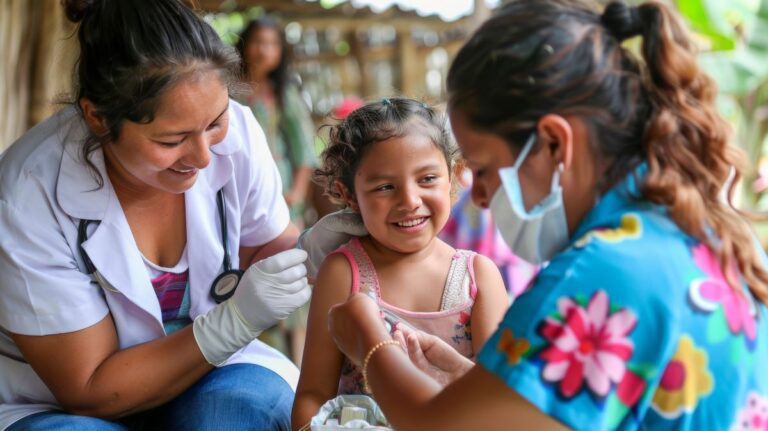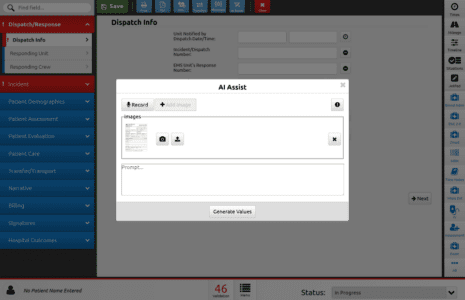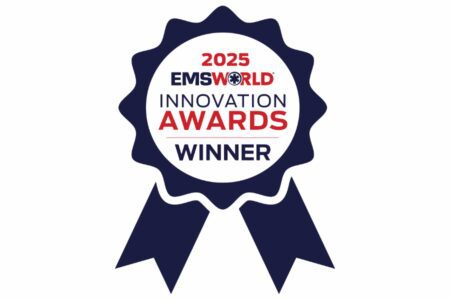While EMS and public health are often seen as separate entities, their collaboration can positively impact community health outcomes and bring valuable benefits to EMS agencies.
Morgan Anderson, an epidemiologist and research manager at ImageTrend, talked about the relationship between public health and EMS during a session at our recent Connect conference. This post shares some of her insights.
What Is Public Health?
Public health focuses on improving community health through disease and injury prevention, screening, and treatment. It also considers the impact of social, economic, political, and environmental factors, known as social determinants of health (SDOH).
Some well-known public health initiatives include immunization programs and recalls of tainted food or dangerous products. Such measures keep people safer and healthier by lowering mortality rates among children and other populations, preventing the spread of disease, and promoting a better quality of life.
Public Health History and Milestones
The public health field emerged in the mid-1800s, when a physician in London had the idea to track cholera cases on a map. His research led him to the source of the outbreak: a neighborhood water pump. By shutting down the pump, he helped prevent others from falling sick.
The publication of Upton Sinclair’s novel The Jungle in the early 1900s was another notable event in public health history. The book exposed unsanitary processes at Chicago stockyards and helped lead to the Pure Food and Drug Act of 1906.
The popularity of the automobile in the early 20th century led to legislation and policies aimed at motor vehicle safety. Such efforts led over time to regulations on seat belt usage, air bags, car seats for children, and other safety initiatives. Today, government agencies often use technology like ImageTrend’s motor vehicle incident visualization software to help highway traffic officers identify high-risk areas and behaviors that can trigger accidents.
These are just a few examples of significant public health initiatives and how community health continues to benefit from them.
Why Should EMS Care about Public Health?
Frequent interaction with community members gives EMS unique insights into public health. They may see people suffering from issues like a lack of safe housing, domestic violence, and substance abuse. Since they also come into contact with diverse communities, they can see the impact of varying social determinants of health.
Members of the public with training in measures like dispensing naloxone for opioid overdose and CPR and automated external defibrillator (AED) use also play an important part in public health. These programs have been linked to improved patient outcomes.
That puts EMS in an ideal position to transform from taking a solely reactive approach (responding to emergencies) to a more proactive one (improving health in communities)—which is the focus of public health.
Benefits of EMS Collaboration with Public Health
When EMS agencies share information such as a rise in calls for certain diseases or conditions, public health officials can create or adjust programs to address new or worsening issues. This ensures that public health programs meet changing community needs.
For example, responders might start seeing more seniors with heat-related illnesses due to extreme temperatures or extended heat waves. This could encourage community leaders to open more cooling centers or create programs for social workers or neighbors to check in on vulnerable residents during heat waves.
In addition, responders can educate members of the public during non-emergency calls and direct them to appropriate programs or provide educational materials. These might include information on the correct installation and use of child safety seat, fall risk and community paramedicine programs, or meals-on-wheels services and food pantries. EMS and public health agencies could even partner with local businesses or nonprofits to create and fund needed programs.
Legislation is another area where public health goals dovetail with EMS objectives. Good Samaritan Laws can help encourage bystanders or people experiencing drug overdose to call for help by providing a certain level of protection from drug-related charges, potentially saving lives.
These efforts benefit both communities and EMS. Community members are more informed about available public health programs and empowered to take control of their health. Improved community health outcomes lead to fewer calls, so EMS agencies can redirect their often limited resources to areas and operations where there is more need.
However, with EMS personnel experiencing high levels of burnout, there are concerns that adding these efforts to their responsibilities poses an additional burden. That doesn’t seem to be the case: a 2023 study of over a thousand EMTs and paramedics showed that a majority were willing to use proposed interventions to address their patients’ needs.
It can also be helpful for EMS leaders to communicate that these interventions have the potential to reduce calls and share research that shows evidence of their impact.
Real-World Examples of EMS and Public Health Collaboration
There are several notable instances of successful partnerships between EMS and public health.
- The Chicago-based Black Fire Brigade introduces EMS and fire service careers to young people in majority African-American communities. Training and recruitment teach youths about self-reliance while becoming more involved in their communities, which helps them develop a sense of pride. Today, the organization says it is the top crime reduction program in the state.
- In Canada, EMS developed a program that enables emergency responders to directly refer patients to community support services related to home care, food insecurity, mental health, and other issues. By shifting care to these services, the program has reduced the number of EMS calls.
- In the United States, people can call 211 to learn about services like heat relief centers, emergency or temporary housing, mental health treatment, and more. A study from the University of Texas estimated the state system’s net value to society at more than $9 million in the first year and more than $150 million over ten years.
What’s Next? Practical Steps to EMS Collaboration with Public Health
While collaboration with public health may seem complex, there are several simple actions EMS agencies can take to get started.
- Staying up-to-date on community programs and resources ensures responders offer community members accurate and complete information.
- Regular communications and meetings with public health departments facilitate information-sharing, troubleshooting, and brainstorming for innovative solutions.
- EMS leaders should integrate disease and injury prevention efforts into everyday operations, such as by providing older individuals with resources and tips for reducing falls in the home (such as installing grab bars and non-slip mats in the shower).
Supporting Better Public Health Now and in the Future
As public health faces growing challenges like the opioid epidemic, environmental changes, insufficient mental health services, and increasing food insecurity, more communication and cooperation with EMS can help communities by promoting available programs as well as identifying where new ones are needed.
Collaboration can also help EMS agencies by lowering the number of calls, reducing stress levels among responders, and enabling leaders to deploy resources more efficiently.
Empower your agency to make a lasting difference in community health. Contact us to learn how our solutions can support effective collaboration between EMS and public health.




